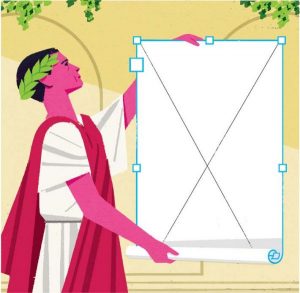Getting Started with Editorial Design
When I was in college, I collaborated with my roommate on a project for our sorority putting together our pledge books which contained our club's history, mission, and a workbook with activities and questionnaires as well as individual interview pages for each existing club member. My roommate was a very meticulously organized person. Because I was coordinating all of the pledge week activities, she agreed to compile all of the member pages, activity pages, and type up all the historical information (the documents from prior years had been lost in an unfortunate computer crash and all we had were hard copies). When she gave me the files to put together the final book, I nearly regretted asking for her help, as I now had the daunting task of combining and compiling about thirty separate 1-2 page Word documents into one printable file.
At the time, putting that book together was a massive headache, but PDF making tools have come a long way since then. Whenever I put together books now, I think about that book - and how maybe my roommate wasn't as crazy as I thought she was for keeping everything separated.
When people think about the "fun" parts of design, they're almost never talking about editorial design. Designing page layouts for magazines, books, forms and publications might not be as flashy as logo design and branding, but it's a vital part of any designer's repertoire. I used to think page layout was tedious, but there is something incredibly satisfying about taking a booklet from boring and basic to something really smooth and snazzy.

Editorial design is complex and layered, and it can be intimidating for beginners, especially if you're not familiar with the tools available. With that in mind, here is a list of a few tips for creating truly impressive page layouts, thanks to the experts at Creative Bloq:
Get Organized - Get your content together first. Don't try to design layout as you go - get all your pieces and parts assembled first so you know what you have to work with. Create a document outline and use that to help you break down the content into easy to manage pieces.
Set Up Master Pages & Styles - Ideally for page layouts you'd be using a program like Adobe InDesign, but even MS Office programs like Word and Powerpoint have tools for setting master presets such as font styles, columns and backgrounds. Master Pages and font styles are your friend for long form books, allowing you to make global changes without having to go back over every single section of a document.
Establish a Visual Hierarchy - Putting the outline and master styles together and making sure they are balanced is vital for establishing a visual hierarchy. You want readers to be able to skim over the document for key information because it breaks down bulk areas of content into easy to retain sections. Pay attention to the balance between headers, text, imagery and white space. Be deliberate and consistent with font choices and have separate styles for headers, subheads, captions, basic text and pull quotes.